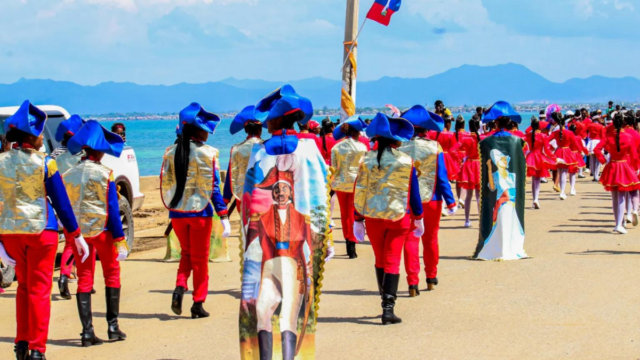
The Haitian Times
www.haitiantimes.com
By Noah Augustin | Contributor
NEW YORK—Whether culturally or politically, Haiti has had a great influence on many countries around the world. Here’s a look at a few of those places.
Dominican Republic
Haiti and the Dominican Republic are connected in innumerable ways, the most obvious of which is that the two nations share the island of Hispaniola. However, because of antihaitianismo, these connections are often overlooked, distorted or forgotten.
Take merengue, for example, the national music of the Dominican Republic. Some historians say it is a version of méreng, a style of Haitian music of Bantu origin, that was introduced to DR during the unification of Hispaniola. The music was modified and mixed with Dominican melodies over Spanish lyrics to form merengue.
Another connection is the roster of notable Dominicans who are of Haitian descent, though some often hide that part of their heritage. Among those of Haitian descent are:
- Politicians such as early President Ulises Heuraux and anti-Haitian dictator Rafael Trujillo had significant Haitian ancestry.
- Dominican athletes such as boxer Fernando Guerrero, among other famous baseball players.
Even today, an estimated 600,000 to 1,000,000 Haitians currently live in the Dominican Republic. Over the years, it has been a fairly accessible and stable option for many Haitians seeking work, schooling, business opportunities and even leisure. Haitian vendors, for example, travel daily across the porous border to buy or sell goods.
Cuba
The first Haitians in Cuba arrived during the Haitian Revolution, when whites fleeing the revolt took with them about 30,000 enslaved people. Since then, a steady flow of Haitians have landed on the crocodile-shaped island, the largest in the Caribbean, just 380 miles west of Cap-Haitien.
When they arrived in eastern Cuba, the Haitians were isolated from the rest of the community due to racism and their practice of Vodou, which was perceived as witchcraft. Despite this, Haitian-Cuban culture continued to develop, birthing one of Cuba’s most important features: Tumba Francesa.
Tumba Francesa, which translates to the French Drum, is a mix of classical European dances with Afro-Carribean melodies and rhythms. Its songs are sung in a mix of Spanish and Kreyol, known as Kreyol Cubano. The dances closely resemble the Spanish and French Contradanza (Contredanse). The instruments used, clearly, are Haitian in origin.
Today, there are about 300,000 Haitians in Cuba where Creole is the second most spoken language. Haitian-Cubans are now more accepted and their rich culture is celebrated throughout the country.
Other Caribbean Nations
Many other Caribbean nations have both diplomatic and cultural ties with Haiti.
The Lesser Antilles, for example, are connected to Haiti through music and language:
- Zouk, a popular genre of music throughout the French Antilles, has origins in Haitian konpa. When konpa groups such as Tabou Combo toured in Guadeloupe, Martinique and Saint Lucia in the 70s to 80s, local musicians adopted the genre and renamed it Zouk .
- Many forms of Antillean Creoles closely resemble Haitian Creole, sharing similar grammar, vocabulary, thus facilitating conversations.
- Guadeloupe, Martinique, Saint Lucia, Dominica and St. Marten are all home to small Haitian communities.
Much larger Haitian communities exist in countries like the Bahamas and Turks and Caicos, making up 25% of the Bahamian population and 21% of the Turks and Caicos population. Many Haitians moved there for jobs, making them vital to those nations’ economies.
In the Bahamas, products such as mangoes and coffee are imported mainly from Haiti.
South America & Central America
In 1808, General Simón Bolivar started the Latin American Revolution that culminated with the liberation of all of South America from Spain. By 1815, however, Spain had the upper hand and managed to drive Bolivar out into the Caribbean.
Haiti, a newly-freed republic led by President Alexandre Pétion, welcomed Bolivar with open arms. He provided the general with strategists, thousands of rifles, supplies and hundreds of soldiers. In turn, Pétion asked that Bolivar abolish slavery from all of Latin America.
With this economic boost, Bolivar won the war.
Although he abolished slavery, Bolivar maintained heavy anti-black regulations out of fear that the former slaves would revolt and seize power; just like they had in Haiti. Nowadays, large Haitian communities all over South America exist in countries like Venezuela, Peru and Brazil.
United States
During the Haitian Revolution, one place the French sought refuge was the U.S., especially modern-day Louisiana. About 10,000 enslaved Haitians arrived in New Orleans alongside the fleeing French, carrying their cuisine and religion, Vodou. Eventually, their cooking merged with Southern cuisine, forming Creole food, and their religion adopted into Louisiana Voodoo.
A century later, as Haitians immigrated to America, communities grew on the East Coast and now parts of the Midwest, often playing a role in shaping American culture.
American historical figures of Haitian descent are writers and activists W.E.B. Dubois and the first Black college professor, Charles L. Reason, to name a few. Musicians such as Wyclef, Jason Derulo and Bibi Bourelly as well as politicians Karine Jean-Pierre, Karl Racine and Kwame Raoul are all Haitian-American.
France and Spain
In 1492, Christopher Colombus claimed the island of Hispañola for Spain. The land’s native Tainos were forced into slavery to mine gold and work on plantations, funding Spain’s development as a European empire.
In the early 1600s, Spain abandoned the Western third of the island, now Haiti, due to pirating. In 1625, France claimed that third, calling it Saint Domingue. It quickly grew into one of the most profitable colonies in the entire world. With over 700,000 Africans, it produced 40% of the world’s sugar and 60% of its coffee, making France a colonial superpower.
Although France later lost Saint Domingue in the Haitian Revolution, the billions of dollars in payments it imposed on the nation funded it for many years to come.
Greece
In 1822 during the Greek war of independence from the Ottomans, Adamantios Korais, the governor of Greece sent Haitian president Jean Pierre Boyer a letter, asking for financial or military support, seeing as Haiti had recently gained independence themselves.
Due to Haiti’s poor financial state and lack of soldiers, Boyer wasn’t able to send adequate aid. To show solidarity, however, Haiti officially acknowledged Greece as an independent state, the first country to ever do so.
The two countries kept strong relations and in 1935, Princess Marina of Greece visited Haiti to express her country’s gratitude.
Africa
Haiti’s biggest influences on the African continent have been political and inspirational.
In 1949, Italy relinquished its colonies of Eritrea, Somalia and Libya after losing WWII. A plan was later devised to have France and Britain take over Libya and split Eritrea between Somalia and Ethiopia.
When the UN took up a vote on the matter, Haiti delegate Emile Saint-Lot, who also played a significant role in the writing of the Declaration of Human Rights, voted against the Eritrea plan despite direct orders from the Haitian president to vote in favor. As a result, the necessary votes to pass it were never attained, thereby granting Libya and Eritrea their independence.
In the 50s Max Dorsinville, another Haitian U.N. member, oversaw the decolonization of much of West Africa, for example, by supervising the first presidential election in Togo.
During the Duvalier regime, many Haitian intellectuals moved to Africa, specifically, Senegal and the modern-day Democratic Republic of Congo.
After the 2010 earthquake, African countries, including Senegal, opened their arms to Haitians seeking refuge. Today, small Haitian communities exist all throughout West Africa.

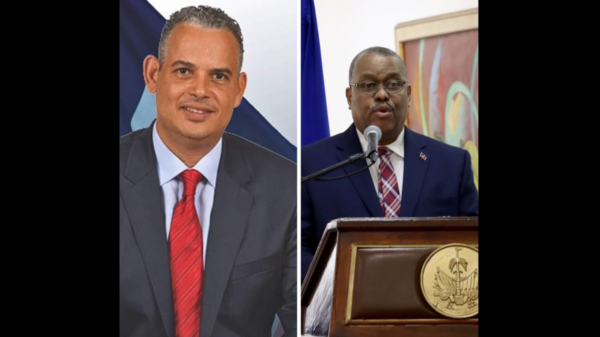

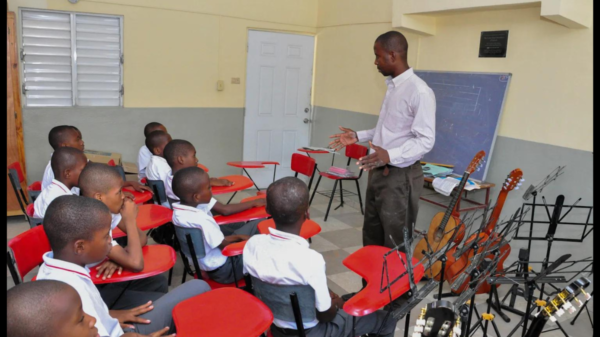



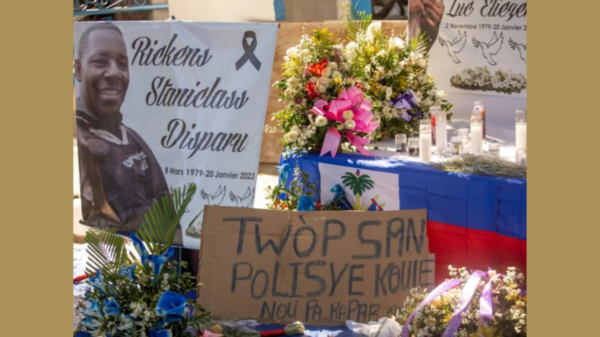
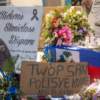
You must be logged in to post a comment Login